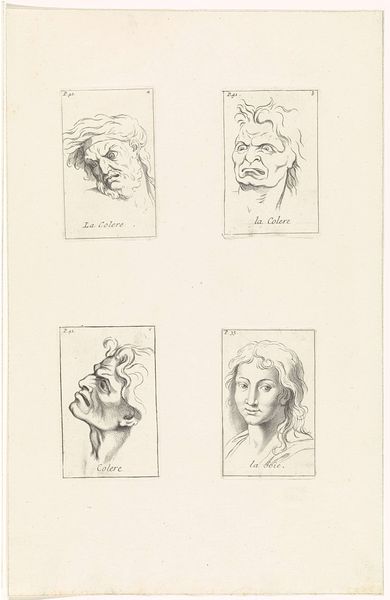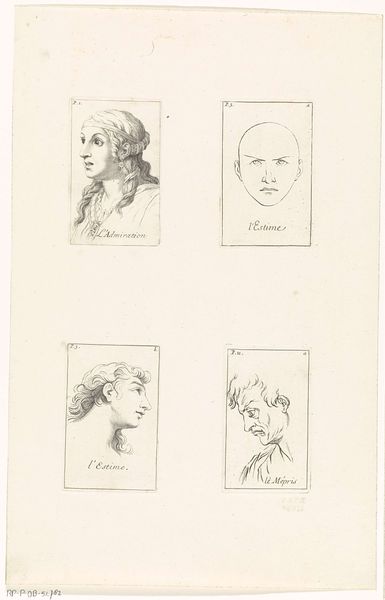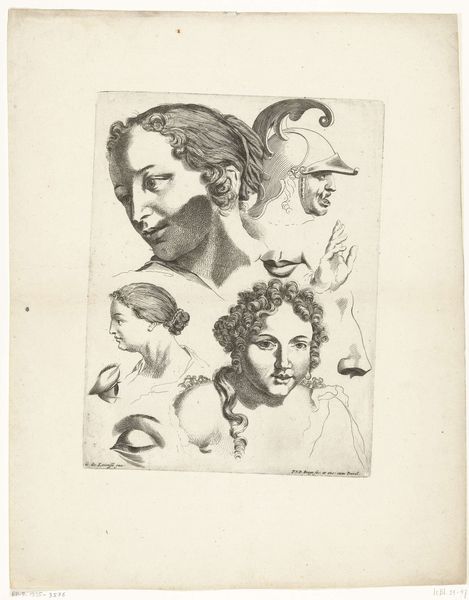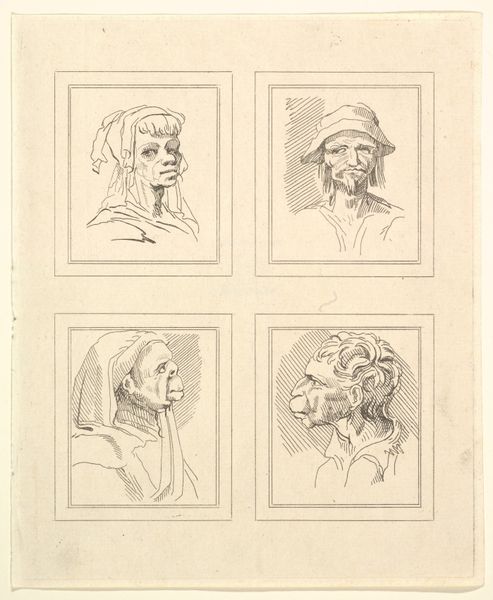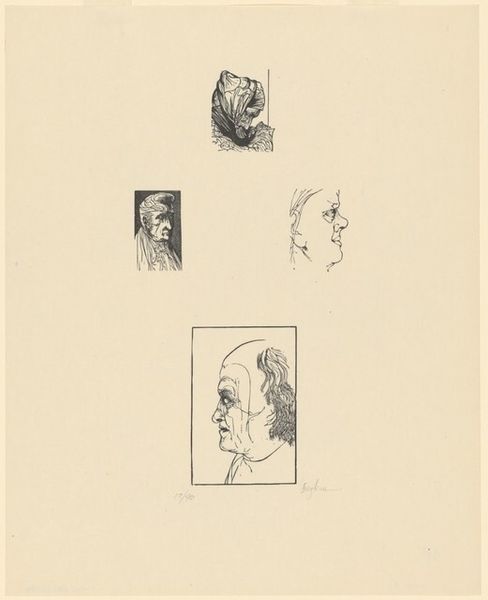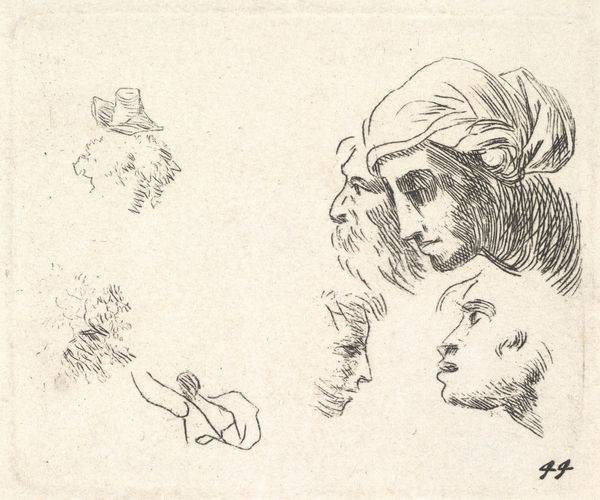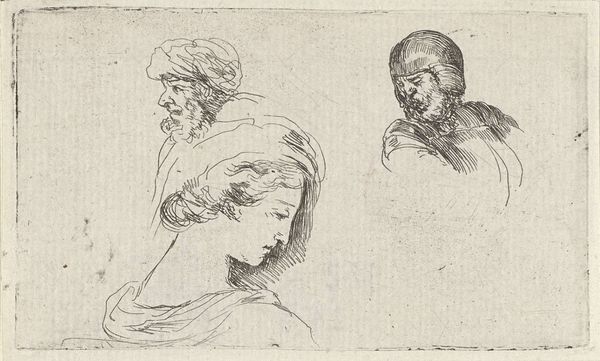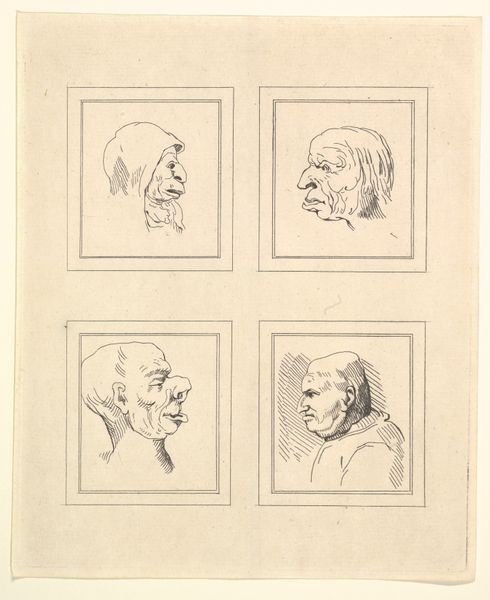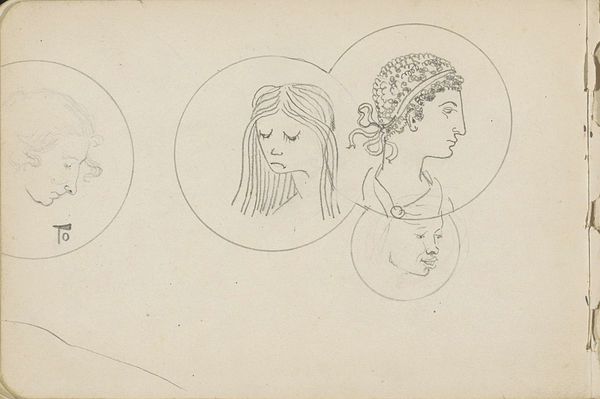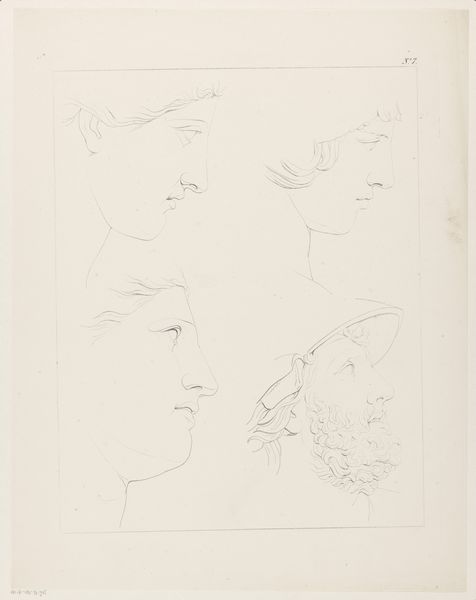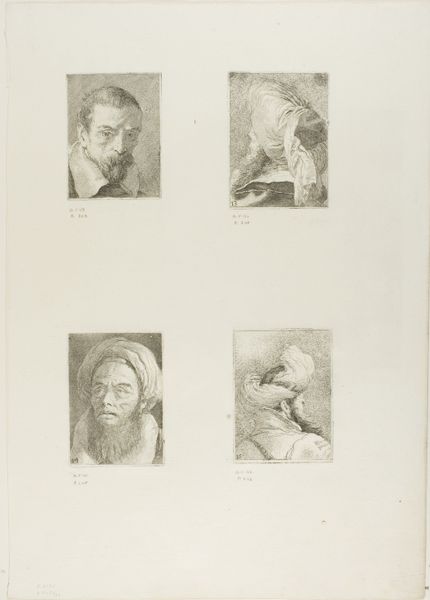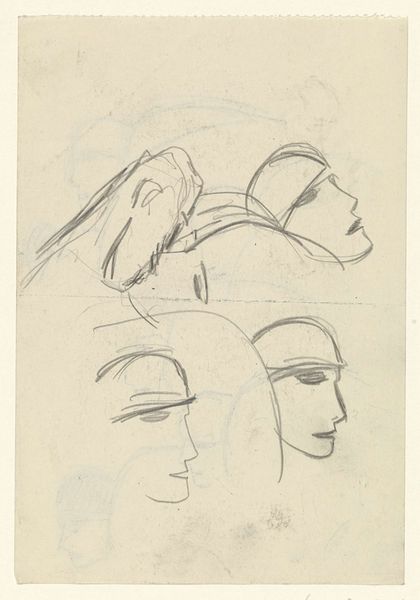
drawing, paper, ink, pen
#
portrait
#
drawing
#
light pencil work
#
quirky sketch
#
baroque
#
pencil sketch
#
paper
#
personal sketchbook
#
ink
#
ink drawing experimentation
#
pen-ink sketch
#
sketchbook drawing
#
pen
#
genre-painting
#
storyboard and sketchbook work
#
sketchbook art
#
initial sketch
Dimensions: height 94 mm, width 60 mm, height 97 mm, width 62 mm, height 94 mm, width 59 mm, height 98 mm, width 60 mm, height 366 mm, width 238 mm
Copyright: Rijks Museum: Open Domain
Editor: So, this is “Voorstellingen van verschillende emoties,” or "Representations of Different Emotions," a pen and ink drawing on paper by Bernard Picart from 1711. I find the whole composition quite striking; these little boxes of intense feeling, neatly arranged. What stands out to you in terms of its historical significance? Curator: Well, what immediately strikes me is the fascinating intersection of art and nascent psychology here. Consider the Enlightenment's burgeoning interest in classifying and understanding human emotions. We see here more than just artistry; Picart engages with a contemporary fascination to categorize internal states, contributing to a broader discourse around the representation and performance of feeling. Where do you see evidence of 'performance' within these studies? Editor: I see it in the exaggerated nature of some of the expressions, especially that figure representing "La Frayeur," or fear. It feels almost theatrical, like a character in a play. Curator: Precisely! The piece also reflects the Baroque interest in drama and spectacle, but filtered through a lens that sought to codify and control the expression of these raw feelings. How do you think these sketches would be perceived in a different socio-political context? Editor: Interesting point. Perhaps, a modern audience would be more interested in the subjective experiences depicted than the systematic representation of emotion, as scientific advancement in cognitive science can provide that insight. These might be perceived simply as beautiful studies of expression now. Curator: Indeed, the shift from seeing art as a didactic tool for understanding the world to appreciating its capacity for personal expression has radically reshaped our interaction with these works. It allows for a more nuanced understanding that these facial studies, as documents, may also have individual artistry to enjoy, despite their perceived cultural functionality in society. Editor: This makes me rethink my initial perspective completely, placing them now at a nexus between science and theatrical representation of emotional reality in the Baroque period. Curator: Exactly! Art always reflects its time, whether intentionally or not. It can be fascinating to analyze, revealing so much about that culture and historical expectations.
Comments
No comments
Be the first to comment and join the conversation on the ultimate creative platform.
